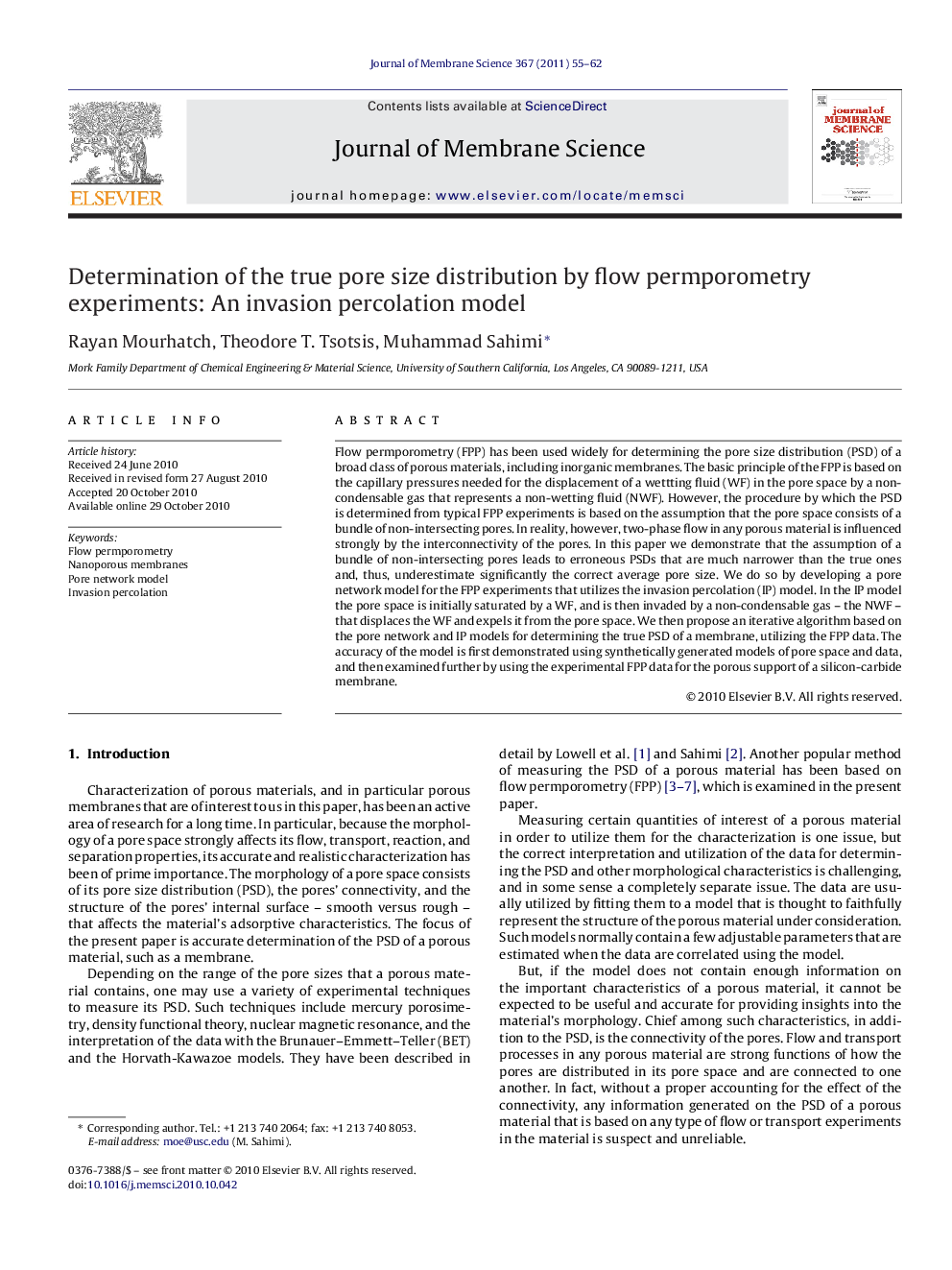| Article ID | Journal | Published Year | Pages | File Type |
|---|---|---|---|---|
| 636012 | Journal of Membrane Science | 2011 | 8 Pages |
Flow permporometry (FPP) has been used widely for determining the pore size distribution (PSD) of a broad class of porous materials, including inorganic membranes. The basic principle of the FPP is based on the capillary pressures needed for the displacement of a wettting fluid (WF) in the pore space by a non-condensable gas that represents a non-wetting fluid (NWF). However, the procedure by which the PSD is determined from typical FPP experiments is based on the assumption that the pore space consists of a bundle of non-intersecting pores. In reality, however, two-phase flow in any porous material is influenced strongly by the interconnectivity of the pores. In this paper we demonstrate that the assumption of a bundle of non-intersecting pores leads to erroneous PSDs that are much narrower than the true ones and, thus, underestimate significantly the correct average pore size. We do so by developing a pore network model for the FPP experiments that utilizes the invasion percolation (IP) model. In the IP model the pore space is initially saturated by a WF, and is then invaded by a non-condensable gas – the NWF – that displaces the WF and expels it from the pore space. We then propose an iterative algorithm based on the pore network and IP models for determining the true PSD of a membrane, utilizing the FPP data. The accuracy of the model is first demonstrated using synthetically generated models of pore space and data, and then examined further by using the experimental FPP data for the porous support of a silicon-carbide membrane.
